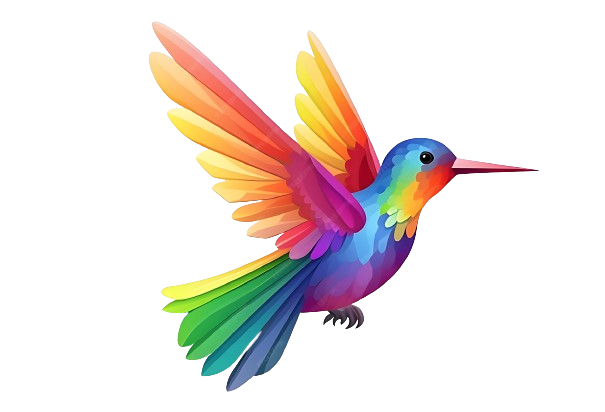Leaf-eating birds typically have broad and short beaks. This shape is perfect for their diet, allowing them to easily grasp and nibble on leaves. Unlike seed-eating birds, which have pointed beaks for cracking seeds, leaf-eaters need a different approach to their food source.
These birds often feed on tender leaves and buds, so their beak shape helps them efficiently strip foliage without wasting energy. Understanding the beak shapes of these birds reveals how well they’ve adapted to their environment and diet. This fascinating aspect of their biology highlights the relationship between form and function in nature.
Key Takeaways
- Beak Adaptations: Leaf-eating birds typically have broad and short beaks, ideal for grasping and nibbling on leaves, which allows them to efficiently consume their foliage-based diet.
- Types of Beak Shapes: These birds exhibit two main beak shapes: broad and flat beaks for softer leaves, and strong conical beaks for tougher and fibrous materials.
- Ecological Impact: Leaf-eater birds contribute to plant control and nutrient cycling, maintaining ecosystem balance by preventing plant overgrowth and enriching soil with their waste.
- Diverse Diets and Biodiversity: The variety in beak shapes among leaf-eating birds supports diverse diets, promoting biodiversity and allowing multiple species to coexist in their habitats.
- Key Species Examples: Notable leaf-eater birds include finches, honeycreepers, and dabblers, each showcasing unique adaptations suited to their feeding strategies.
Overview Of Leave Eater Birds
Leave eater birds, commonly referred to as leaf-eating birds, possess specific beak shapes that aid in their feeding habits. They primarily consume foliage, which includes leaves, buds, and other plant material. The design of their beaks allows them to efficiently gather and process their food.
Broad, Strong, and Stunted Beaks characterize many leaf-eating birds. Birds like finches, which also consume seeds and grains, have beaks that are ideal for mashing hard shells. These beaks help in tearing and processing leaves, showcasing an adaptation that allows these birds to thrive on a varied diet.
Wide, Flat Beaks are seen in birds such as swans, geese, and ducks. These birds eat aquatic plants, including leaves. Their long, flat beaks facilitate reaching underwater to grasp vegetation. The flat shape secures slippery leaves, making feeding more efficient in aquatic environments.
Overall, the beak shapes of leaf-eating birds reflect significant adaptations that support their dietary needs. Each shape offers unique advantages that contribute to their survival in different habitats.
Also Read: Can Birds Eat Chocolate
Types Of Beak Shapes
Leaf-eating birds show various beak shapes that help them consume leaves effectively. These adaptations play a crucial role in their ability to thrive on a diet of foliage.
Adaptations For Leaf Eating
Leaf-eating birds have evolved specific beak shapes to optimize their food intake. Two main types exist:
- Broad and flat beaks: These beaks allow birds to easily pluck and tear leaves from plants. They enable efficient handling of vegetation. Examples include the Hoatzin and the Leaf-eating Antbird. Their wide beaks can grasp large leaves, making it easier to access food.
- Strong and conical beaks: Some birds possess strong, conical beaks that help them break down tough leaves. This shape provides enough strength to crush and process fibrous material. Birds like the Leaf-eating Tanager and the Leaf-eating Warbler illustrate this adaptation. These beaks assist in digesting harder plant tissues.
Impact Of Beak Shape On Diet
The shape of a bird’s beak directly affects its diet. Specific beak shapes are adapted for different types of foliage:
- Birds with broad and flat beaks excel at feeding on softer leaves and broad vegetation.
- Those with strong and conical beaks can tackle tougher leaves and fibrous plants.
Such variations in beak shapes support a diverse diet and allow these birds to thrive in different environments. These adaptations also reflect how various species meet their dietary needs effectively.
Examples Of Leave Eater Birds
Leaf-eating birds exhibit various beak shapes that help them consume foliage efficiently. This section highlights examples of species categorized by their distinct beak types.
Species With Strong, Broad Beaks
- Finches: Finches possess broad, strong, stunted beaks that excel in mashing up the hard shells of seeds and grains. These beaks also serve well for eating leaves and other plant materials.
- Honeycreepers: Honeycreepers feature curved, slender bills ideal for sipping nectar. Some species among them possess stronger, more robust beaks for consuming leaves.
- Dabblers: Dabblers, which include swans, geese, and ducks, have long, flat beaks designed for reaching below water’s surface to eat aquatic plants and grasses.
- Hummingbirds: Hummingbirds showcase long, thin, tubular bills perfect for sipping nectar from flowers. These bills allow them to access various plants efficiently, including those with tender leaves.
Also Read: What Do Baby Birds Eat
Ecological Role Of Leave Eater Birds
Leave eater birds play a vital part in their ecosystems. Their beaks are specially designed for consuming leaves and other plant materials. This specialization allows them to thrive in environments where other food sources might be limited.
Contribution to Plant Control
Leave eater birds help control plant growth. By consuming leaves, they prevent certain plants from dominating the landscape. For instance, the Hawaiian honeycreepers, which include species like the Palila, have strong, broad beaks. These beaks allow them to tear and crush leaves effectively. Their feeding habits support a balanced ecosystem, promoting the growth of a variety of plants.
Nutrient Cycling
Leave eater birds also aid in nutrient cycling. As these birds consume foliage, they excrete waste that enriches the soil. This process returns essential nutrients to the ground, benefiting other plant species. Birds like the Maui Alauahio, with their short, stout beaks, also turn over lichens and bark. This behavior exposes insects hidden in leaf litter, which contributes to both bird and insect populations.
Food Source for Other Animals
Additionally, leave eater birds serve as a food source for other animals within their habitat. The insects they expose while foraging attract various predators. This relationship creates a balanced food web, essential for maintaining ecological stability.
Biodiversity Support
Diverse diets among leave eater birds promote biodiversity. Different species with unique beak shapes consume various types of vegetation. This specialization allows multiple species to coexist, each fulfilling a role in their ecosystem. The presence of these birds indicates a healthy environment with ample plant diversity.
Leave eater birds, through their feeding habits and interactions with plants, significantly impact their surroundings. Their adaptations and roles in nutrient cycling, plant control, and food webs showcase their importance in maintaining ecological health.
Conclusion
Leaf-eating birds demonstrate a remarkable adaptation in their beak shapes that allows them to thrive on a diet primarily composed of foliage. These specialized beaks not only facilitate efficient feeding but also play a vital role in their ecosystems.
By controlling plant growth and contributing to nutrient cycling, these birds enhance biodiversity and maintain ecological balance. Their unique feeding strategies and interactions with vegetation underscore the intricate connections within nature, highlighting the importance of preserving these species and their habitats for the health of our environment.
Frequently Asked Questions
What is the shape of the beaks of leaf eater birds?
The shape of the beaks of leaf eater birds is generally adapted to their diet. Most of these birds have wide range of beak shapes, typically featuring conical beaks or thin beaks that allow them to efficiently strip leaves and consume vegetation. Their beak adaptations help them process tough plant material, which is essential for their survival.
How do beak shapes vary among different species of leaf eater birds?
Different species of leaf eater birds exhibit a variety of beak shapes that reflect their specific dietary needs. For example, some finches have conical beaks ideal for cracking seeds, while others may possess thin beaks suited for picking leaves. This diversity in beak or bill morphology highlights how birds have different adaptations based on the type of food they consume.
Why do leaf eater birds have specialized beaks?
Leaf eater birds require specialized beaks to effectively access and consume their preferred food sources. These adaptations enable them to extract nutrients from leaves, which can be tough and fibrous. By evolving specific beak adaptations, they can exploit a niche that may be less accessible to other birds, giving them a competitive advantage in their habitat.
What role does the size of the beak play in the diet of leaf eater birds?
The size of the beak plays a crucial role in the feeding efficiency of leaf eater birds. Larger beaks may allow for a greater capacity to consume bulky vegetation, while smaller bird beaks may be more effective for precision feeding in dense foliage. The overall size of the bird can also influence the corresponding size of the beak, as larger birds tend to have larger beaks suited to their feeding habits.
What adaptations do leaf-eating birds have for their diets?
Leaf-eating birds have evolved specialized beak shapes that help them efficiently consume foliage. These adaptations allow species like the Hoatzin and Leaf-eating Antbird to thrive on various types of vegetation, showcasing a strong relationship between their physical form and dietary needs.
How does beak shape affect a bird’s diet?
Beak shape is crucial for leaf-eating birds as it directly influences their ability to eat specific types of vegetation. Different beak shapes allow these birds to specialize in consuming various leaves, fruits, and flowers, ensuring they can access the nutrients required for their survival.
Why are leaf-eating birds important for the ecosystem?
Leaf-eating birds play vital roles in ecosystems by controlling plant populations, cycling nutrients, and providing a food source for other animals. Their foraging habits promote biodiversity and help maintain ecological health, making them key contributors to balanced ecosystems.
Can you name some examples of leaf-eating birds?
Examples of leaf-eating birds include the Hoatzin, Leaf-eating Antbird, and various species of pigeons. Each of these birds has evolved unique beak shapes tailored to their specific dietary needs and the types of vegetation available in their habitats.
Also Read:

